
Charlie Drake in: Charlie Drake Land
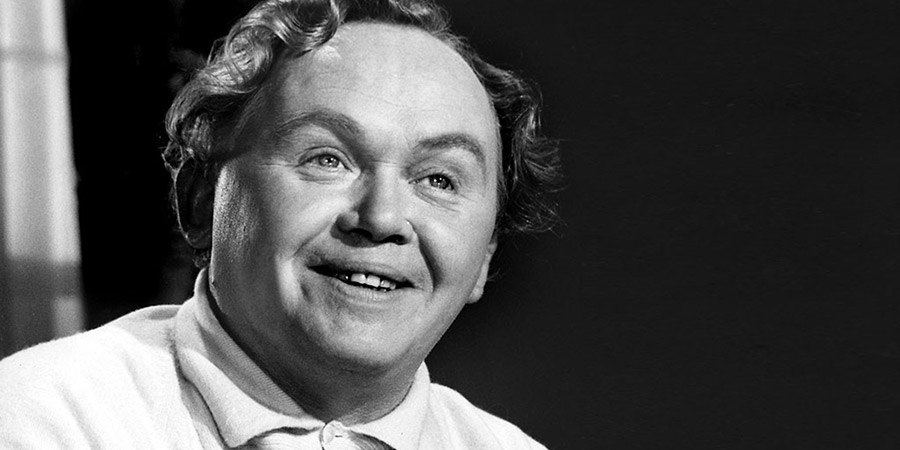
Few people these days remember Charlie Drake. He was one of the biggest stars of British comedy from the fifties through to the seventies, feted and fawned over by the great and the good, but he faded into obscurity long before his death in 2006, and, if he is recalled at all these days, it is probably only for the brief and blurry YouTube clip (264,905 views and counting) of him being knocked unconscious during a live TV broadcast back in 1961.
That incident, in fact, offers an intriguing insight into the forgotten man of British comedy, because, as with so many other aspects of his life and career, it is a story distorted by a myth of his own making.
The conventional account, repeated unquestioningly by most printed and online sources, is as follows: when a stunt went wrong during one of his shows, Drake cracked his skull, was in a coma for at least three days and did not work again for two years. Most of that, in truth, is at best an exaggeration and at worst patently untrue, but, in the peculiar life of Charlie Drake, such misinformation is very much the norm rather than the exception.
In the autumn of 1961, prior to the accident, the short, stocky, pug-like and, behind the scenes, notoriously pugnacious Charlie Drake was arguably at the peak in his career. He was an internationally celebrated star, heavily in demand on stage, television and movies, with his own high-profile sitcom on BBC TV, and was topping the latest tabloid readers' polls - well ahead of the likes of Tony Hancock - as the country's most popular comic.
With his red ringlet hair routinely bleached by buckets of whitewash, his tiny blue piglet-like eyes squinting through an endless succession of custard pies, a large and plump bottom that seemed custom-designed for cushioning pratfalls, and a strangulated soprano bleat of a voice that made his tweely undulating catchphrase, 'Hello my darlings,' sound creepily endearing, the comedian left some critics cold but won warm applause from the many lovers of no-nonsense knockabout comedy.
Standing no more than 5 foot and 1 inch tall, he was a strange little man, with a weighty sense of self-worth (he would describe one of his sketches as 'the best nine minutes of television comedy that has ever been made or will ever be made'). Although his routines were undeniably physically-demanding (over the course of his career he would break several ribs and fingers, his right leg and left arm, and crack most of the bones in his neck and skull), most of them were derivative and one-dimensional, and yet he tended to talk about them all as though they were as innovative and inspired as anything conceived by the likes of Laurel and Hardy, Harold Lloyd or Buster Keaton. Always an eager and earnest self-promoter, he puffed up each programme with plenty of hot air, sticking august and solemn adjectives on to his run-of-the-mill routines like gothic sconces stuck on the walls of a post-war council house.
Spending his money almost as fast as he could earn it, he displayed all the trappings of fame with an overbearing sense of entitlement and preening pride. There would be flashy fast cars (boasting of one of them: 'if you were to put a BMW, a Ferrari, MG Metro, 6R4, Porsche 911 Turbo SE, Rolls-Royce, Aston Martin and a couple of Mercs into a car blender, mix them at 170 mph, out would pop this dramatic, electronic-packed, all-powerful status symbol'), a state of the art cabin cruiser, a succession of glamorous homes, a wardrobe full of bespoke Savile Row clothes, and no fewer than fourteen Newmarket-stabled race horses, as well as, disturbingly, a string of very young girlfriends ('I do seem to stick at seventeen,' he once said. 'They are much nicer at that age').
His brand-conscious style of conversation also ensured that, for example, he would never simply sip a Scotch (he would instead partake a tipple of 'Glenmorangie, that good sensible malt whisky') or a glass or two of champagne (it would be 'a couple of bottles of Dom Perignon'), and rather than merely say that he had enjoyed a pleasant dinner the previous evening, he would niggle his hard-working but under-paid crews by insisting upon mentioning the location ('very exclusive') and the menu ('avocados stuffed with tender crab meat, lobster Thermidor, tiny minute steaks garnished with petit pois and mushrooms' finished off with 'raspberries soaked in Hine antique brandy'). He was a walking, talking advert, and the advert was always about Charlie Drake.
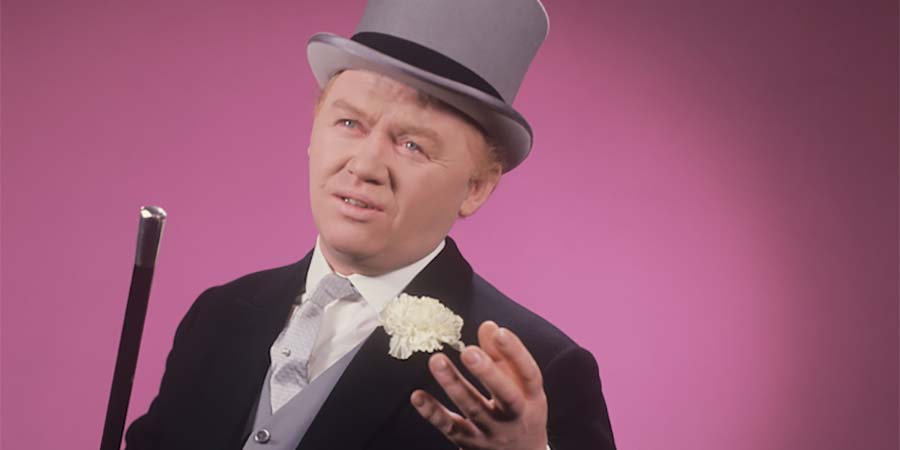
This air of pretentiousness had grown noticeably worse since the BBC had given Drake his biggest starring vehicle so far, The Charlie Drake Show, in 1960. Its instant success - it was the BBC's first 'comedy/variety' show to reach the top ten of the viewing charts since ITV started competing in 1955 - had further inflated his ego, and, after two series, this mini-monster of a man had managed to irritate and alienate many of those who worked with him both in front of and behind the cameras.
Describing himself repeatedly as 'the best slapstick comic in the world,' he had not only taken to referring to himself in the third person, but also, far more bizarrely, in the third place: 'Charlie Drake,' he liked to say, lived in 'Charlie Drake Land'.
When, for example, he was challenged about his creative judgement, he would respond by announcing that 'Charlie Drake Land is painted black and white - greys sicken me'; when encountering an unwelcome rule, he would dismiss it by declaring that such a rule 'did not apply in Charlie Drake Land'; when he felt that he had won an ally, he would pat them on the back and say approvingly, 'It takes a lot of courage to enter Charlie Drake Land'; and when he lost a friend, or a wife, he would explain sadly that they 'wanted to leave Charlie Drake Land'.
It was down to this egotistical attitude, and to the sheer professional hubris of the man, that so many of his peers, as well as even some of his current colleagues, longed to see him suffer a humbling setback or two. Few of them, however, would have wished on him the kind of calamity that was about to bring his career to such an abrupt and harrowing halt.
On a cold and damp Tuesday night at the Shepherd's Bush Empire on 24th October 1961, Drake was due to star in the opening episode (entitled Bingo Madness) of the third series of his show. Broadcast live on BBC TV, it was a predictably conventional 'little man versus big man'-style sitcom notable mainly for its basic and sometimes quite brutal slapstick, which usually involved the diminutive Drake slipping, sliding, falling or being smacked about by his supposed superior, climaxing each week with a more elaborate physical routine.
In this latest episode, however, that major scene would go badly wrong. During his usual tireless tour of the tabloids, Drake had drummed up interest in the scene in the days leading up to the broadcast, telling journalists excitedly that it was going to be 'very big slapstick-wise, and very dangerous,' adding that, although it had been 'rehearsed to the Nth degree, if it doesn't work I'll break my neck'. Those words would soon come back to haunt him.
During the scene in question, his character, after being bullied by two much taller and more powerful men, was supposed to be pulled through a library bookcase, shattering the shelves as he went, and then thrown out of a window. It had gone perfectly well in the final morning's rehearsal, so Drake, feeling satisfied, merely reminded the set men to make sure that all of the balsa wood shelves were gently glued in place and most definitely not nailed.
When the crew then broke for a well-earned lunch, however, a new team of carpenters arrived to finish the chores. Spotting what they thought was shoddy workmanship, they proceeded to secure all of the shelves with additional injections of glue along with nails hammered hard and fast. The head carpenter then walked around the bookcase, pulling and pushing each part of it to check that it was now absolutely secure, and then, with a satisfied rub of his hands, he took his men off to work in another studio.
Come the live recording, several hours later, the unsuspecting Drake went through the motions of each scene with his fellow actors, and then, during the final sequence, was duly pulled through the bookcase, straight into rock-hard shelves, and was immediately knocked unconscious. He was flat on the floor, covered in sawdust, a lifeless lump in a cheap Chaplin suit.
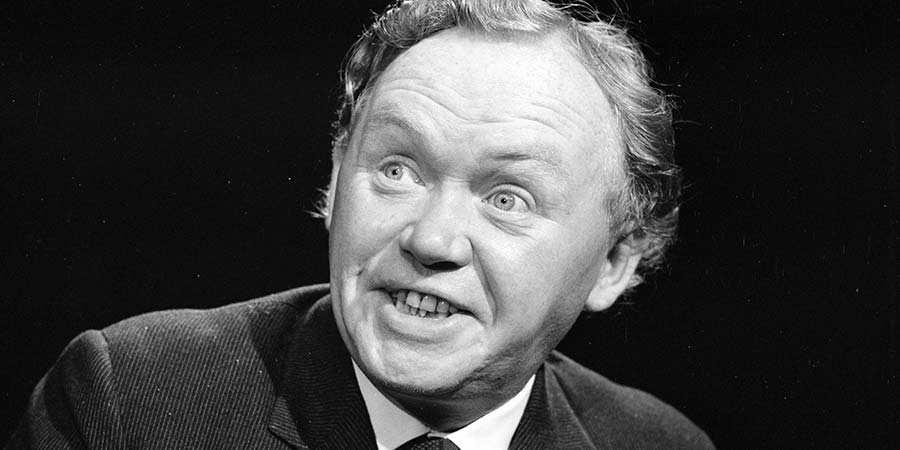
The sight surprised no one at the time. Charlie Drake, after all, was one of the most experienced exponents of fierce and fearless physical comedy in the world, a master of how to make each carefully-choreographed crash and collapse seem painfully vivid and real. It therefore only seemed like another example of his expertise when he completed the stunt with such bone-shaking authenticity.
His co-stars, still clearly oblivious to what had actually happened, thus continued with the scene in a similarly rough and tough manner. They duly bundled up the motionless body and, after struggling with the great weight of it, hurled it through a sugar-glass window, banging Drake's head yet again in the process, this time on a stage-weight on the hidden side of the set.
Only seconds then passed, but, given how the scene had been timed so tightly during rehearsals, it must have seemed more like minutes to the team as they all waited for the next thing to happen. It was only when it became alarmingly obvious that the star was not ad-libbing and was not going to make his scheduled re-entrance that the director, Ronald Marsh, finally realising that something had gone badly wrong, started rolling the credits two minutes early, while the other two actors stood around awkwardly in front of the camera.
The BBC doctor, who was always kept in the studio during recordings in case of such emergencies, was then promptly summoned to the set, where Drake's body laid still in the shadows. Diagnosing, somewhat optimistically, 'a slight case of concussion,' the doctor then arranged to accompany the comedian to the nearest hospital. The audience, both in the studio and in their homes, sat staring meanwhile with a mixture of amusement, puzzlement and alarm. 'What,' some of them wondered to each other, 'did I just see?'
The incident was reported widely in the national newspapers the following morning. 'Millions of viewers saw him motionless on the studio floor after a tricky slapstick sequence,' reported the Daily Mirror, with the Daily Herald adding that 'more than 2,000' of them 'phoned the BBC to ask what happened'. A classic 'water cooler moment,' it was a common topic of conversation in shops, offices and factories all over the nation.
Drake had, in fact, fractured his skull and suffered severe concussion. In his own - predictably dramatically-enhanced - account that later appeared in his autobiography, Drake's Progress, he would claim to have remained in a coma in a clinic for three solid days, but in reality he was unconscious for no more than ninety seconds. After undergoing tests and a 'make sure' X-ray, he was driven by the doctor from hospital back to his home, 'Weir Ahead,' on the Hamm Court Estate in Weybridge, Surrey, where he was put to bed. He spent what remained of the night drifting in and out of consciousness and sometimes being violently sick.
'He's not at all well,' his young wife, Heather, told the crowd of reporters who had gathered outside the house the following morning. 'The biggest lump you've ever seen [is] right across his forehead'. She then said, with a sigh and a sad shake of her head: 'I can't help thinking he's living more dangerously than he need'.
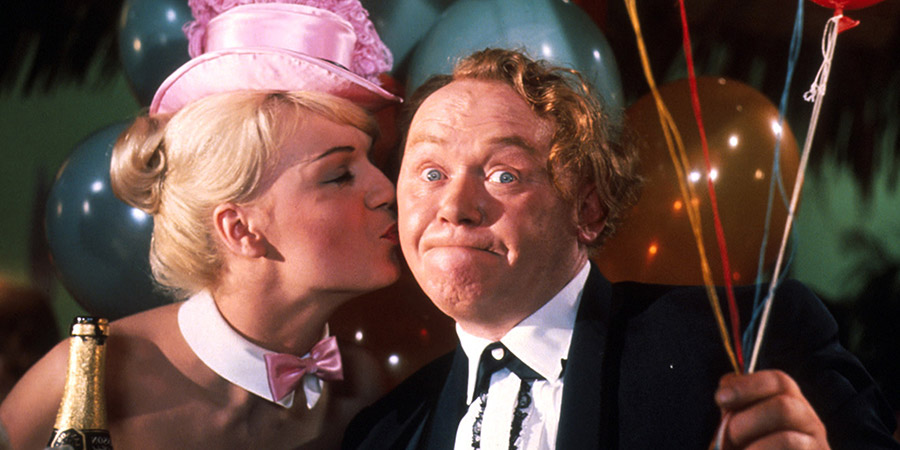
In his later, ludicrously fanciful, retelling of this sequence of events, Drake had himself still languishing in an exclusive clinic ('the one in which Liz Taylor stayed when she had her tracheotomy done'), and, when he eventually woke from his coma, was comforted not by his wife but by a 'startlingly pretty Malaysian nurse,' who crept into his room late one night, locked the door, and treated him to an erotic alcohol rub. 'She removed my Turnbull and Asser white silk pyjamas,' he would write breathlessly, 'and stood for a few minutes just looking'. That, apparently, did the trick: 'My happy muscle grew under her gaze,' he panted, and, thanks to the fact that she had 'a tongue like a magic wand,' he 'exploded' back into life.
Back in the real world of October 1961, however, Drake stayed in his own bed, in his own home, under what was possibly the less arousing gaze of his wife. He was showing little improvement, but his publicists, anxious to play down the speculation that was spreading about the severity of the accident, put out the message that he was rapidly on the mend and 'determined to be on TV again next week'. The truth, however, was that doctors were still seriously concerned about his health, and Drake had been ordered to rest indefinitely.
The BBC, although alerted to the worrying news about the comedian's real condition, agreed to buy him and his family some time by stressing that his sitcom was merely 'postponed,' showing a repeat from the previous series in the slot reserved for the following week. Before it was even screened, however, on Tuesday 1st November, it had become patently clear to everyone involved that Drake was in far too fragile a state, mentally as well as physically, to carry on with any of his current professional commitments, and it was duly announced that his doctors had arranged for him to take a complete break in the London Clinic. It was also confirmed that he had withdrawn from the forthcoming Royal Variety Show, and that the rest of his BBC series had been cancelled.
It was a sign of how prominent a public figure he had become that the Queen, on a visit to the BBC's Television Centre the following day, was reported as asking for further information about the accident and inquiring as to an update about his health, and, as the days went on, a sort of soap opera started in the tabloids concerning, usually with the pun intended, how hard the mishap had hit him.
On 6th November, for example, one paper reported that a 'sad-faced' Drake had lamented 'I can't remember my scripts'. On 15th November, it was revealed that he had left the London Clinic in order to complete his recuperation at home. On 27th November (so much for the mythical 'two year retirement'), he was said to be feeling sufficiently well to be ready to start rehearsals for his lead role in the pantomime, Little Old King Cole, which was due to open at the London Palladium on 20th December. On 8th December, however, one tabloid quoted him as complaining that, as far as other potential employers were concerned, he was now considered an insurance risk: 'No one will insure me. My accident put them off.'
On 11th December, Drake was back on television for the first time since his accident, as the subject of the BBC's show This Is Your Life, but it proved an awkward encounter, with him 'looking on disconsolately' while the incident was shown on the screen again. After that he did the panto as promised, but once the season had been completed early in 1962 he still seemed a performer, and a person, in a strange and aimless daze.
In May of that year, he announced he was leaving the BBC - in spite of the considerable support and encouragement they had shown him - for ITV. In June, however, while appearing in summer season in Torquay, he was involved in a motoring accident in Bovey Tracey in Devon, where his very expensive new sports car - a Facel Vega - lurched off the road, through a hedge and down a railway embankment after his tyre burst while he was on his way to a golf course. His injuries, though not severe, forced him to cancel several performances.
Then things grew more peculiar. On 29th July 1962, when accepting his 'Top Comic' honour at the Daily Mirror Awards ceremony at the Café Royal in London, he stunned onlookers by saying at the end of a rambling and downbeat speech: 'I am tired, very tired...I seem to be always in and out of the London Clinic. I haven't enough money to live comfortably for the rest of my life, and I don't know what I'm going to do. But I'm through with show business.'
He followed that bombshell a few days later by declaring that painting was his new 'obsession'. Dressed self-consciously in a splattered smock, he invited a group of somewhat puzzled journalists to view his recent output, and pointed proudly at such works as 'Crucifixion' (a bold neo-Fauvist-style painting in deep oranges and reds), 'And Then There Were None' (a Lowryesque exercise in chiaroscuro) and 'The Debutante' (a Munch-like expressionist piece in pink, white and red).
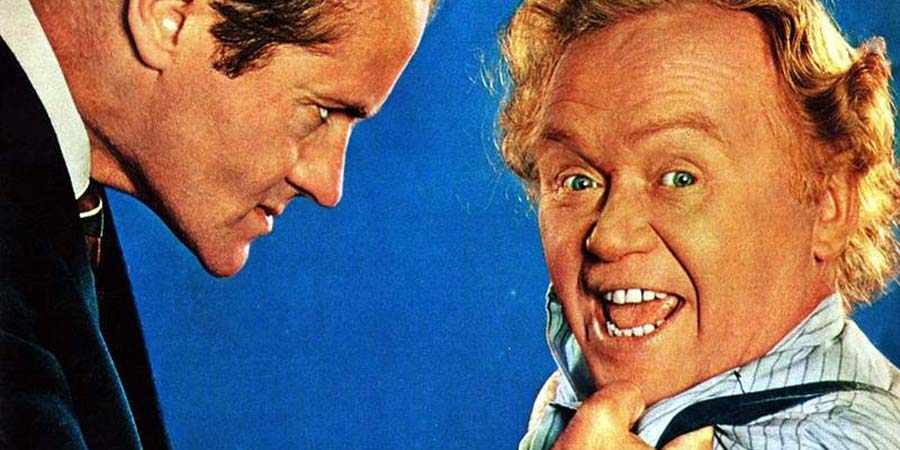
As Drake sipped champagne and spoke grandly about the multiple meanings of each masterpiece, and the journalists raised their eyebrows, the scene brought to mind, with a painful sense of irony, Drake's fellow comic Tony Hancock as the deluded would-be artist in The Rebel (released the previous year), moving gamely from one genre catastrophe to the next while his landlady Mrs Crevatte looks on in horror. 'Once I start I can't stop,' said Drake excitedly. 'I work right through the night ending maybe at five in the morning.'
In 1963, however, Drake suddenly executed a volte-face. In July, he announced that, although he continued to enjoy painting, he had decided that comedy was his proper vocation after all: 'Financially I could give up show business,' he averred, contradicting his earlier claims, 'but I am happy only when I am trying to be funny'.
He proceeded to host a variety show - called The Charlie Drake Show - for ITV later that year, and would follow that with a new sitcom, The Worker, in 1965. His career went on as before.
The strange thing is, however, that he did not appear to have learned anything of consequence from all of the trauma of the previous two years. In Charlie Drake Land, it seemed, one was destined to keep doing the same things while expecting a different outcome.
It would come as no surprise, therefore, when the accidents kept on happening. Like a magician enslaved by his own tricks, Drake was now a prisoner of his own slapstick. He carried on hurting himself in the process of pretending to hurt himself.
In August 1964, for example, during a summer season in Blackpool, Drake was busy boasting about a new 'dangerous' slapstick routine that he was confident, if all went according to plan, would command a standing ovation.
It went ahead. It did not go according to plan.
The next day's newspapers reported that Charlie Drake was back in hospital. He was, they said, suffering from concussion.
Help us publish more great content by becoming a BCG Supporter. You'll be backing our mission to champion, celebrate and promote British comedy in all its forms: past, present and future.
We understand times are tough, but if you believe in the power of laughter we'd be honoured to have you join us. Advertising doesn't cover our costs, so every single donation matters and is put to good use. Thank you.
Love comedy? Find out moreThe Worker - The Complete Series

Charlie (Charlie Drake) is keen to work for his living but, unfortunately, he's completely accident-prone.
He's been visiting his local Labour Exchange regularly for over 20 years and has had nearly 1,000 jobs. He managed to get himself sacked from every one of them within hours of starting.
First released: Sunday 27th May 2007
- Distributor: Network
- Region: 2
- Discs: 5
- Catalogue: 7952674
![]() Buy and sell old and new items
Buy and sell old and new items
Search for this product on eBay
BCG may earn commission on sales generated through the links above.
The Cracksman

This hugely endearing crime caper stars Charlie Drake as a mild-mannered locksmith whose talents land him in hot water when he's recruited by a criminal gang; Nyree Dawn Porter is the beautiful girl who spells his downfall, with Oscar winner George Sanders as rival crime boss 'the Guv'nor' opposite Dennis Price (Kind Hearts And Coronets' villainous aristocratic outcast). The Cracksman is presented here in a brand-new transfer from the original film elements in its as-exhibited theatrical aspect ratio.
Ernest Wright's peerless prowess as a locksmith comes to the attention of a tough big-time crook, who feels that the little man would be a valuable asset to his crime kingdom. In order to inveigle him into a series of jobs, he sets up a beautiful hostess as a trap, into which the hapless Ernest inevitably falls...!
First released: Monday 17th February 2014
- Distributor: Network
- Region: 2
- Discs: 1
- Minutes: 108
- Catalogue: 7953995
![]() Buy and sell old and new items
Buy and sell old and new items
Search for this product on eBay
BCG may earn commission on sales generated through the links above.
- Distributor: Network
- Minutes: 108
BCG may earn commission on sales generated through the links above.
Sands Of The Desert

Charlie Drake plays a misunderstood larger-than-life travel agency clerk, Charles Sands, who is sent to the desert to supervise the opening of one of his firm's famous holiday camps. What Charlie doesn't know is that a ruthless Arab sheikh wants the land on which the camp is being built, because he believes there's oil in the dunes!
The irrepressible star of The Worker heads an impressive cast - including superior screen villain Peter Arne and Upstairs, Downstairs regular Raymond Huntley - in this early 1960s comedy feature, presented here in a brand new transfer from original film elements in its as-exhibited theatrical aspect ratio.
First released: Monday 8th June 2015
- Distributor: Network
- Region: 2
- Discs: 1
- Catalogue: 7954308
![]() Buy and sell old and new items
Buy and sell old and new items
Search for this product on eBay
BCG may earn commission on sales generated through the links above.

